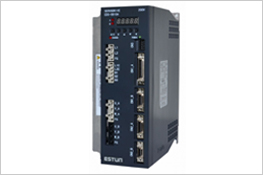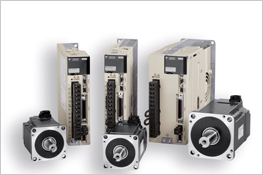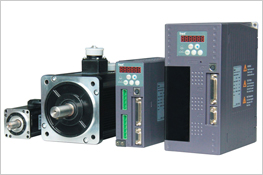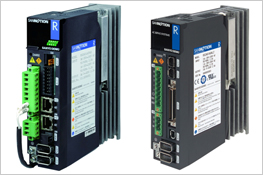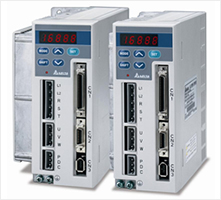Motor control requires three basic elements: a motor, a drive, and one or more feedback devices. The drive controls current in order to produce torque drives also commonly control velocity and sometimes control position. In many control systems, multiple axes of motion must be controlled in synchronization. Usually a separate multi axis controller provides co-ordination for the machine while the drives are left to implement the control associated with individual motors
There are many control functions to be implemented for each axis of motion. First, a position profile, which is a sequence of position commands versus time, must be generated. Second, a position loop must be closed, and usually within that, a velocity loop is closed. The output of the position/velocity loop is a torque command. In brushless motors (including permanent-magnet brushless DC and induction motors), the torque command and the motor position are used to calculate multiple current commands in a process called commutation; for brush motors, commutation is mechanical. Then the current loop(s) must be closed. A power stage delivers power to the motor and returns current feedback.
Servo System
Electronic motion control is a multi-billion-dollar industry. Servo motion is a fraction of that industry, sharing it with non-servo motion, such as stepper motors and variable-frequency systems. A servo system is defined here as the drive, motor, and feedback device that allow precise control of position, velocity, or torque using feed-back loops. Examples of servomotors include motors used in machine tools and automation robots. Stepper motors allow precise control of motion as well, but they are not servos because they are run "open-loop," without tuning and without the need for stability analysis.
The most easily recognized characteristic of servo motion is the ability to control position with rapid response to changing commands and disturbances. Servo applications commonly cycle a motor from one position to another at high rates. However, there are servo applications that do not need fast acceleration. For example, web-handling applications, which process rolled material such as tape, do not command large accelerations during normal operation; usually, they attempt to hold velocity constant in the presence of torque disturbances.
Servo systems must have feedback signals to close control loops. Often, these feedback devices are independent physical components mechanically coupled to the motor; for example, encoders and resolvers are commonly used in this role. However, the lack of a separate feedback device does not mean the system is not a servo. This is because the feedback device may be present but may not be easily identified. For example, head-positioning servos of a hard-disk drive use feedback signals built into the disk platter rather than a separate feedback sensor. Also, some applications use electrical signals from the motor itself to indicate speed. This technology is often called sensor lesser though the name is misleading; the position is still sensed but using intrinsic motor properties rather than a separate feedback device.
